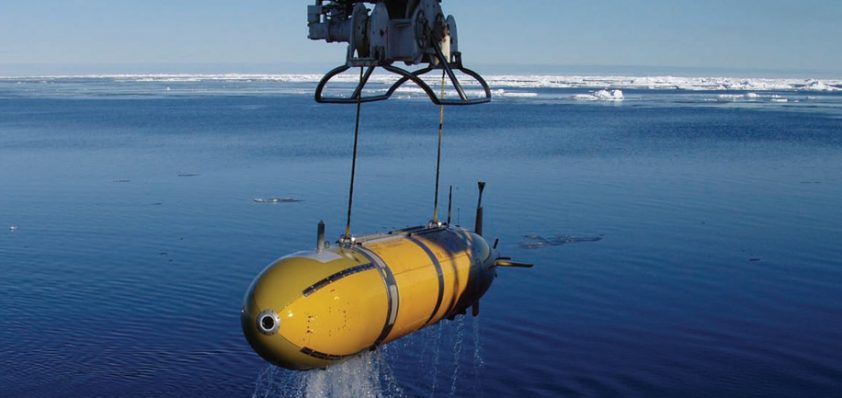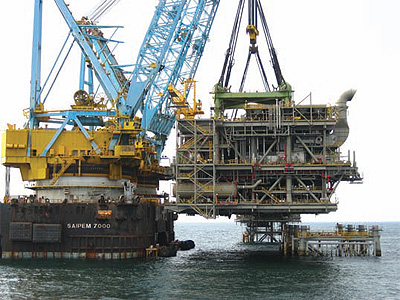
Society for Underwater Technology
Group effort
Conceived with a relatively simple purpose, the Society for Underwater Technology (SUT) serves as a central point bringing together organisations and individuals with common interests in underwater technology, ocean science and offshore engineering.
 As such, since its formation in London in 1966 the company has subscribed to the same basic model as a member-based organisation, which can promote understanding and create opportunities for networking and the sharing of knowledge and best practice experiences.
As such, since its formation in London in 1966 the company has subscribed to the same basic model as a member-based organisation, which can promote understanding and create opportunities for networking and the sharing of knowledge and best practice experiences.
The success of the SUT meant that in 1990 a branch was established in Aberdeen in order to tap into the industry activity in the region. From 2000 though, the SUT realised that although it was a UK-based organisation, increasingly, new members were joining from overseas countries. In order to offer these individuals the same benefits as those based in the UK, the Society embarked upon a course of internationalisation. The first of these global branches was set up in Brazil, and over the last ten years this has been followed by activities in Houston in the US, Perth and Melbourne in Australia, Malaysia, Norway, Africa, Canada and China.
Each overseas branch is generally set up as a separate legal entity from the SUT in the UK, which enables it to organise its own business in terms of operating events, conferences and courses, as well as retain total financial control. In terms of identifying locations to best place these resources, demand is usually driven by deep water oil and gas activity referred to as subsea engineering within the local region, but in more recent years this includes other developing markets such as marine renewable energies.
Membership of the SUT is open to both individuals and corporate organisations which, as Chief Executive Dr Bob Allwood explains, offers numerous benefits: “To a company or corporate member we offer a very generous concession rate on the events, conferences and courses that we run, which can deliver great returns for those larger organisations looking to take advantage of these. We also offer up-to-date information on developments through our journal Underwater Technology and magazine UT2, as well as networking and specialist group opportunities.”
“Likewise, individual members can take advantage of these communication opportunities and our in-house expertise, which is delivered through specific specialist groups. We also offer scholarship grant opportunities to students through our Educational Support Fund (ESF) initiative,” he adds.
In 2011 alone the SUT supported 17 students: 12 undergraduates and five postgraduates in their studies in courses relevant to underwater technology. Since the scheme began over 20 years ago, the Society has assisted over 260 students in total. Whilst initially this scheme was solely for UK students studying at UK universities, the initiative has recently been expanded to accommodate  any student in any country studying any approved course in the world.
any student in any country studying any approved course in the world.
Underwater technology is of course a broad area and as such the SUT has divided these concerns between a number of specialist committees in order to best promote, and create opportunities for development and sharing of information and ideas, education, research, and discussions regarding economic and sociological benefits. The specialist committees include diving and manned submersibles, education and training, environmental forces (SUTGEF), marine renewable energies, ocean resources, offshore site investigation and geotechnics (OSIG), subsea engineering and operations, underwater robotics, underwater science, policy advisory, and the latest offering – salvage and decommissioning.
Elaborating on those areas where the Society has seen increased signs of interest, Bob reveals that the oil and gas sector tends to dominate in terms of membership: “Specifically we are talking about deep water subsea engineering, where technology has moved on tremendously in recent years, and therefore it’s important for companies to be aware of these developments. One particular example is subsea processing, as the wells get deeper, the more energy is required to bring the products and impurities, in particular water, to the surface to be separated. Therefore there is a movement towards carrying out these processes at the seabed. This raises various challenges in terms of equipment, technology and in particular reliability of these complex systems so they can operate without intervention for long periods. This is just one instance where the SUT is able to benefit this community by assisting the transfer of knowledge between different sectors in order to achieve results.”
This is an area that the SUT has also focused on in its strategic plan for the next five years. In order to improve the sharing of such information the Society has recognised a real need to strengthen communication not only between the technical areas, but also between its global branches to ensure members have access to international best practices. Highlighting those other areas that the SUT will be actively pursuing for the next year, Bob concludes: “Each year we spend quite a lot of time going through our strategic goals to identify what has been achieved over the preceding 12 months and to look at the relevance of those things that are still outstanding. In previous years we have tended to set ourselves quantitative targets but we are now focused on more qualitative measures, which has proved much more successful.
“Back in 1995 the Marine Panel was set up as one of ten sector panels to help drive forward the second round of the UK Foresight Programme which was concerned with identifying the technologies that would be required in the medium to long term. Two years ago our past president proposed that this marine technology foresight activity should be updated, and as a Society we have been happy to take a lead in this in collaboration with other partners.”
Society for Underwater Technology
Services: Multidisciplinary learned society